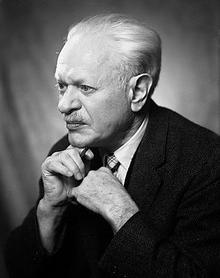Emmanuel Levinas was an amazing man,
scholar and philosopher. It was a privilege to get to know him better and see
what a great impact he made on the world. He only died 19 years ago in 1995 and
left with him a lasting philosophy of our responsibility to what he called “the
other.” I thought this philosophy would work well with my topic of theatre.
Emmanuel Levinas studied phenomenology, or
“the study of the structures of experience and consciousness.” He was among the
first philosophers to try and figure out the “I” in relation to other people
and experiences. In his book Totality and Infinity he says, "Everyone
will readily agree that it is of the highest importance to know whether we are
not duped by morality."[Levinas 21] And his quest was to prove we are
not. Being moral is how we live.
His obituary spoke clearly of his beliefs:
“Dr. Levinas's alternative to traditional approaches was a philosophy
that made personal ethical responsibility to others the starting point and
primary focus for philosophy, rather than a secondary reflection that followed
explorations of the nature of existence and the validity of knowledge.
"Ethics precedes ontology" (the study of being) is a phrase
often used to sum up his stance. Instead of the thinking "I"
epitomized in "I think, therefore I am" -- the phrase with which Rene
Descartes launched much of modern philosophy -- Dr. Levinas began with an
ethical "I." For him, even the self is possible only with its
recognition of "the Other," (Steinfels)
Levinas then had an interesting relationship with theater; in fact
most sources said he despised it. It only makes sense that the man who studied
a real relationship to “the other” would not enjoy watching a parade of
fabricated relationships.
But I still found many articles relating Levinas’s philosophy to the
stage. I don’t think it can be helped.
Levinas adopted Heidegger's argument that the logos gathers up
Being and makes it accessible to us. So Levinas believes that we can logically
know truth. We can logically know truth through interaction with other people.
He says, echoing the sentiments of Plato, “ The exploration of the self, ...
unfolds in a language that is best communicated through enactment.” (Stanford)
Based off this statement I would have thought him very keen to the idea
of theatre and entertainment. It puts men on a stage to emulate what human
interaction does. But, Levinas would say theatre is only fake interaction. We
don’t directly engage with theater so we gain nothing from it.
In one great article I found Liza Kharoubi brings up the ethical issue
posed by Levinas about theater. “On stage,” she says, “we hop from one universe
to another via different screens or projections. New media theatre exposes
several timelines on stage. But isn’t the question rather: What does this
uphinging, this “out of joint” time and space tell us about our “contemporary”
time and space?” (7) What is the purpose of theater and why does taking us out
of our own time make us relate to it. Kharoubi continues by calling “theatrical
space and time…cultural constructs.” (6) These productions that we put on for
viewing pleasure do more than just excite emotion. She explains, “Like an excitable atom producing energy, the erotic theatrical
space creates desire and enables us to get out of ontology and reach towards
ethics.” (6) it tells us something we can hardly put into concepts, it
reinvents, resensibilises, and wakes up the public’s attention. (10) Kharoubi
argues we can have real experience through theatre it performs a metamorphosis of
the audience so they do really experience a connection with Levinas’s “other.”
She even takes it a step forward, a step I would like to take by saying that
theater allows us to question the ethics of the world.
I definitely think there is lots to learn from Levinas about spectacle
and theater whether he personally enjoyed it or not. In fighting against the
artifice he makes many defend it and it is nice to see both sides. I would suggest Kenna and who ever is
doing spectacle look into his philosophy.
Works Cited
Kharoubi,
Liza. “Interfaciality: Levinas
and the ethical challenge of new media theatre.” Academia.edu.
28 Feb. 2014 http://www.academia.edu/1690139/INTERFACIALITY_LEVINAS_AND_THE_ETHIC AL_CHALLENGE_OF_NEW_MEDIA_THEATRE
Levinas E., Totality and
Infinity: An Essay on Exteriority (Alphonso Lingis,
transl. Pittsburgh: Duquesne University Press), p. 21.
Stanford
Encyclopedia of philosophy “Emmanuel Levinas” First published Sun Jul
23, 2006; substantive
revision Wed Aug 3, 2011
Steinfels, Peter. “Emmanuel Levinas, 90, French
Ethical Philosopher,” Published: December
27, 1995
Photo credit:
http://emmanuellevinasrpt.wordpress.com/
http://streettalkin.com/jesus-christ-superstar-at-the-academy-of-music/














